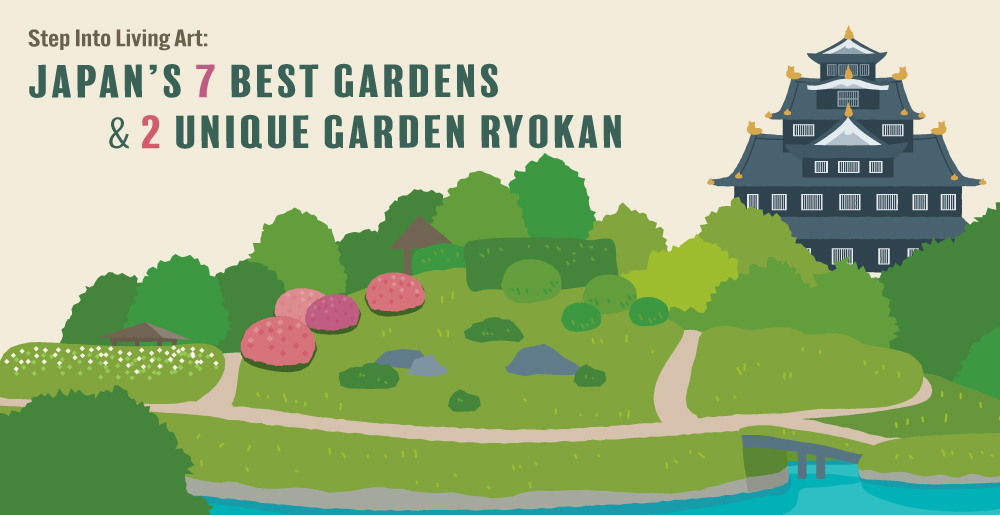
Japan is world-renowned for its breathtaking gardens, which seamlessly blend natural beauty, traditional art, and cultural heritage. These peaceful spaces—crafted with carefully placed stones, lush greenery, and landscapes that transform with every season—are often described as living works of art.
For travelers seeking serenity, unforgettable photography, and a true immersion into Japanese aesthetics, visiting these gardens is an experience not to be missed. This article introduces seven of Japan’s most iconic gardens—five pond-stroll gardens and two dry landscape gardens—along with two unique ryokans (traditional inns) where you can enjoy the rare privilege of staying inside a Japanese garden.
Seasonal Splendor:
Top 5 Japanese Gardens
Chisen-kaiyushiki Teien (Pond-Stroll Gardens)
This garden style features a large central pond with winding paths, designed to reveal new perspectives as visitors stroll. Often incorporating shakkei (borrowed scenery) to frame distant landscapes, these gardens create an immersive, ever-changing experience. Popular among feudal lords, they remain the most common type of large public garden in Japan.
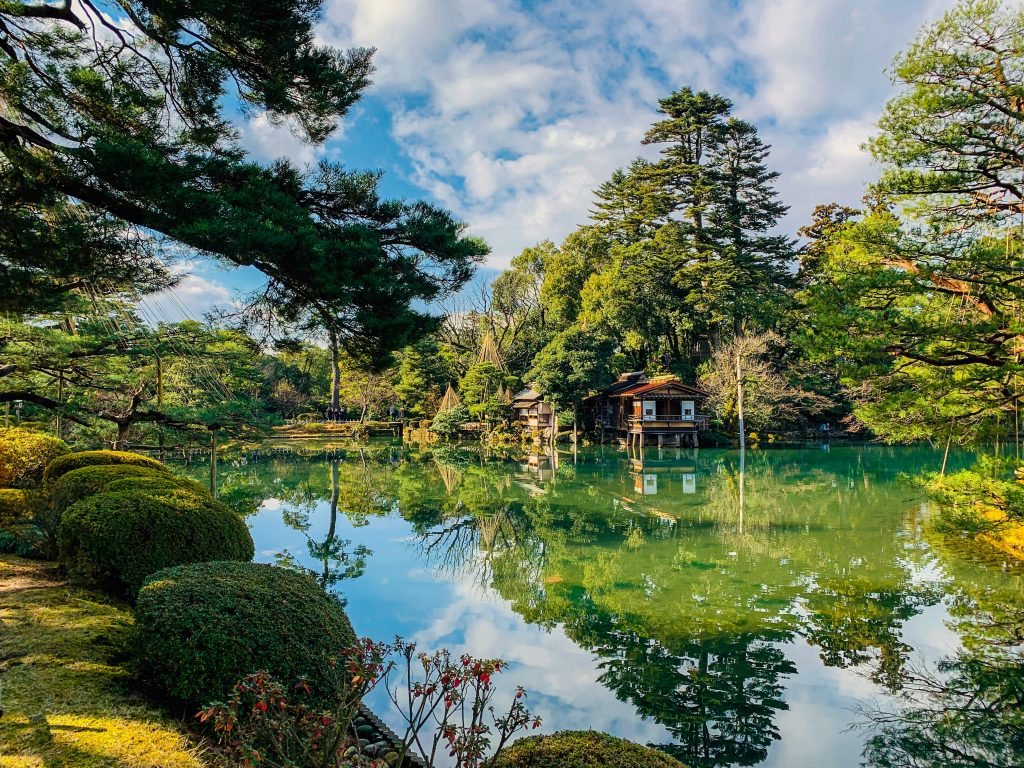
Kenroku-en / 兼六園 (Ishikawa)
Often called Japan’s most famous garden, Kenroku-en—also part of the “Three Great Gardens”—offers ponds, streams, tea houses, and more than 8,700 trees. Each season brings a new masterpiece: cherry blossoms in spring, fiery maples in autumn, and a snowy wonderland in winter, complete with yukitsuri ropes protecting the trees. The Kotoji-toro lantern is a beloved symbol and photo favorite.
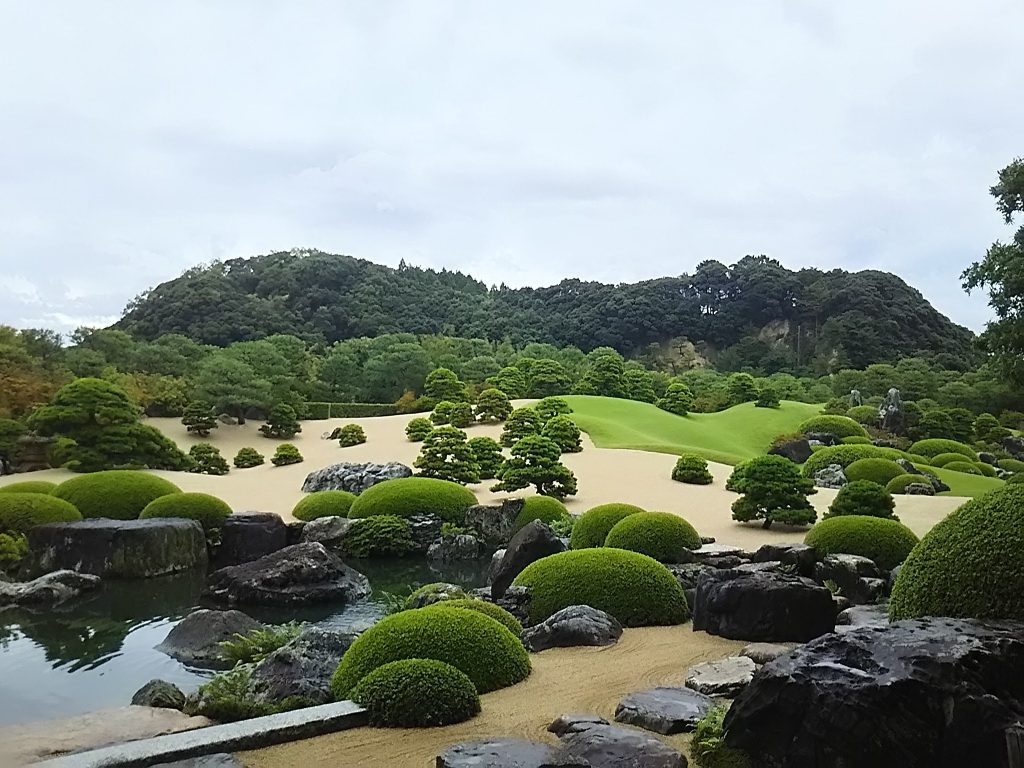
Adachi Museum of Art Japanese Gardens / 足立美術館 (Shimane)
Awarded “Best Japanese Garden” for 13 consecutive years, the Adachi Museum gardens span 165,000 square meters and showcase multiple styles, including a Dry Landscape Garden, Moss Garden, and Pond Garden. Each season transforms the grounds into a living painting—ideal for photography lovers and those seeking quiet strolls.
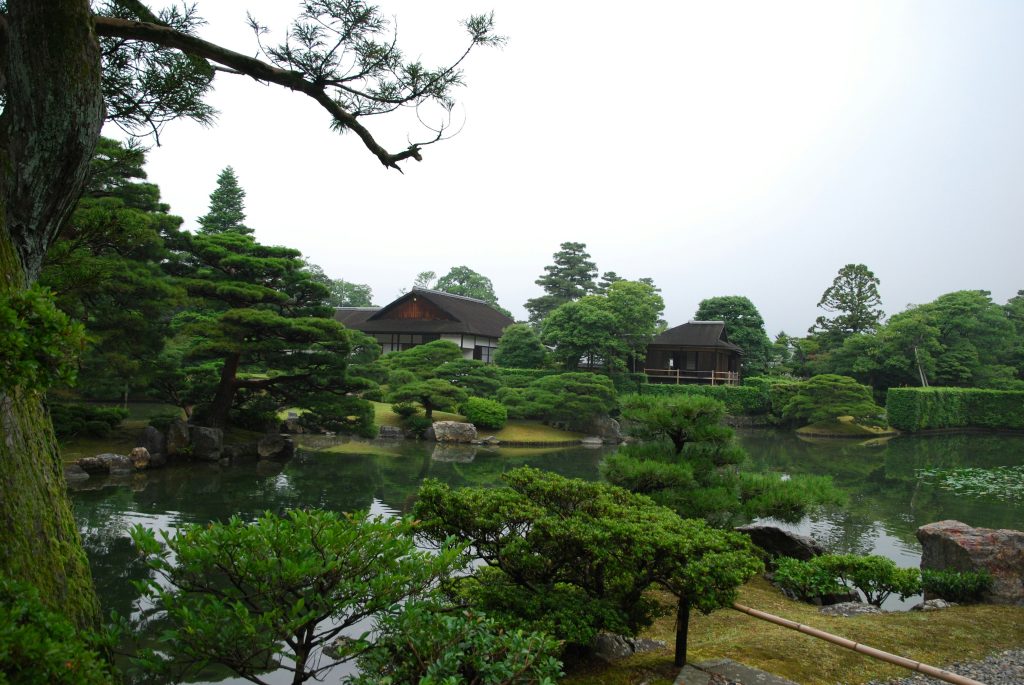
Katsura Imperial Villa / 桂離宮 (Kyoto)
Built as a retreat for the Imperial family, Katsura Imperial Villa is home to one of Japan’s most celebrated stroll gardens. The pond-centered layout reveals breathtaking views at every turn, harmonizing space, perspective, and natural elements.
Tip: Reservations are required.
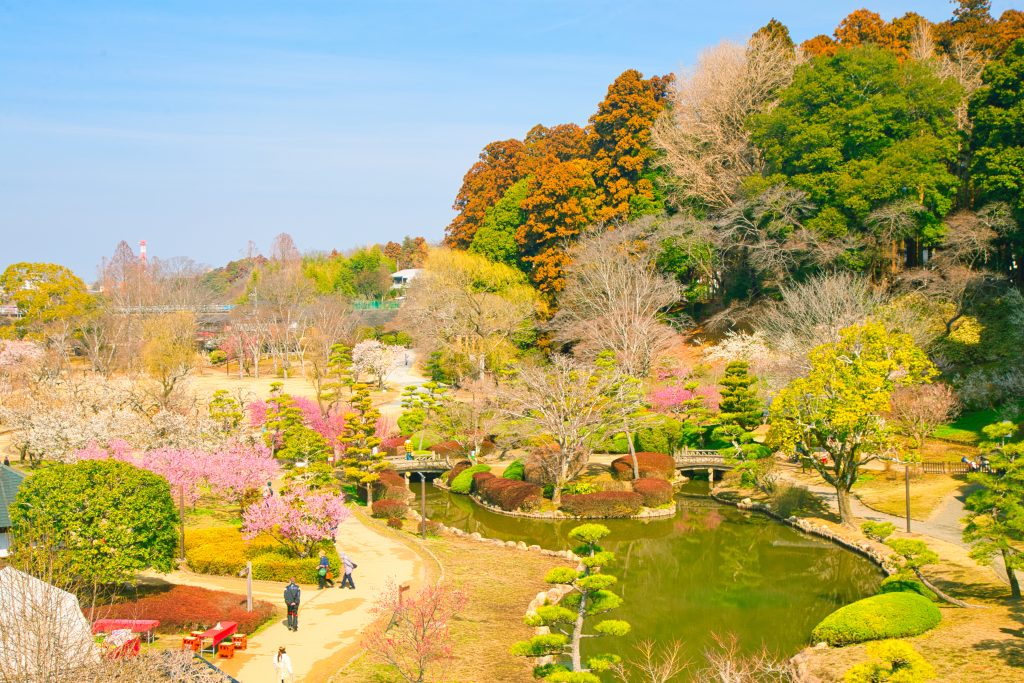
Kairaku-en / 偕楽園 (Ibaraki)
Created in 1841 for public enjoyment, Kairaku-en is one of Japan’s “Three Great Gardens” and is best known for its spectacular plum blossoms. Each spring, over 3,000 plum trees bloom, filling the air with fragrance. Unlike many historic gardens reserved for nobles, Kairaku-en was designed for everyone, making it one of Japan’s most welcoming landscapes.
後楽園-1024x678.jpeg)
© Okayama-Korakuen
Korakuen / 後楽園 (Okayama)
Another of the “Three Great Gardens,” Korakuen is renowned for its open lawns and tranquil atmosphere, set against the dramatic backdrop of Okayama Castle. Ponds, teahouses, and winding paths invite leisurely exploration. Seasonal highlights include cherry blossoms in spring, lotus flowers in summer, and brilliant autumn foliage.
The Art of Zen:
2 Must-See Rock Gardens
Karesansui Teien (Dry Landscape Gardens)
Also known as “Zen gardens,” these abstract landscapes use rocks, sand, and moss to represent mountains and water without using actual water. The raked white sand symbolizes the sea, while carefully placed stones suggest islands. Viewed from a single vantage point, these gardens embody Zen philosophy and invite quiet contemplation.
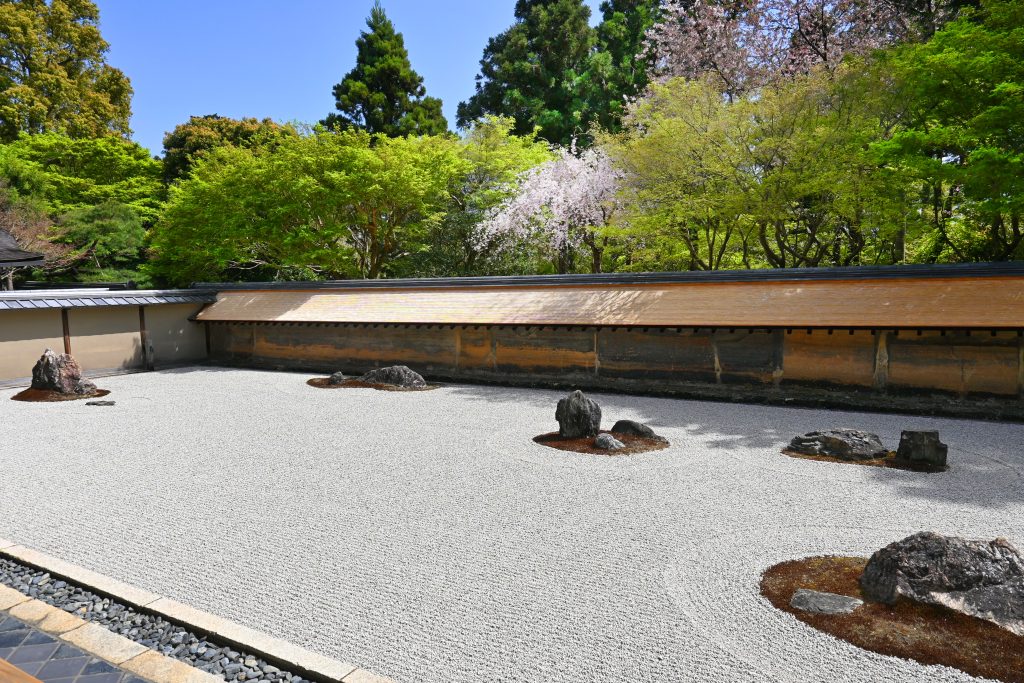
Ryoanji Temple / 龍安寺 (Kyoto)
Perhaps the world’s most famous rock garden, Ryoanji is a profound expression of Zen thought. Its fifteen stones, set in a bed of white gravel, are arranged so that at least one is always hidden from view—no matter where you sit. This elegant puzzle inspires reflection and meditation.
建仁寺 -1024x683.jpg)
©Kenninji
Kenninji Temple / 建仁寺 (Kyoto)
Kyoto’s oldest Zen temple, Kenninji combines deep history with striking design. Its kare-sansui garden, known as the “Circle, Triangle, Square Garden,” is a modern interpretation of tradition. The three shapes represent the essential elements of the universe, encouraging visitors to contemplate their symbolic meanings.
Stay Inside a Japanese Garden:
2 Unique Ryokan Experiences
Imagine not just visiting a garden, but waking up to its beauty just outside your window. These two exceptional ryokans offer the rare opportunity to stay within a traditional Japanese garden.
松田屋ホテル-1024x630.jpg) © MATSUDAYA HOTEL
© MATSUDAYA HOTEL
Matsuda-ya Hotel / 松田屋ホテル (Yamaguchi)
With more than 300 years of history, Matsuda-ya Hotel combines timeless elegance with garden beauty. Renowned samurai and Meiji Restoration leaders once stayed here, adding to its cultural significance. Guests today can soak in natural hot spring baths while gazing at the illuminated garden—a magical sight after sunset.
庭園の宿-石亭.webp) ©SEKITEI
©SEKITEI
Teien-no-yado Sekitei / 庭園の宿 石亭(Hiroshima)
Nestled in the hills, Teien-no-yado Sekitei provides a tranquil escape where every room overlooks a stunning Japanese garden. Guests can wander along stone paths, rest beside koi ponds, and enjoy seasonal views—truly like living inside a work of art.
A Journey Through Japan’s Living Art
Japanese gardens are more than landscapes—they embody Japan’s culture, history, and deep reverence for nature. On your next trip to Japan, explore these remarkable gardens for a peaceful, soul-soothing experience.
Contact IACE Travel today and let us help you plan your journey into Japan’s timeless beauty.
Traveling to Japan?
IACE TRAVEL has you covered!
From flights and accommodations to transportation and sightseeing, and more!
IACE TRAVEL can help from coordination and arrangements…leave it to us!
We look forward to hearing from you!
Inquiry Form(212) 972−3200◀Check out the August issue

